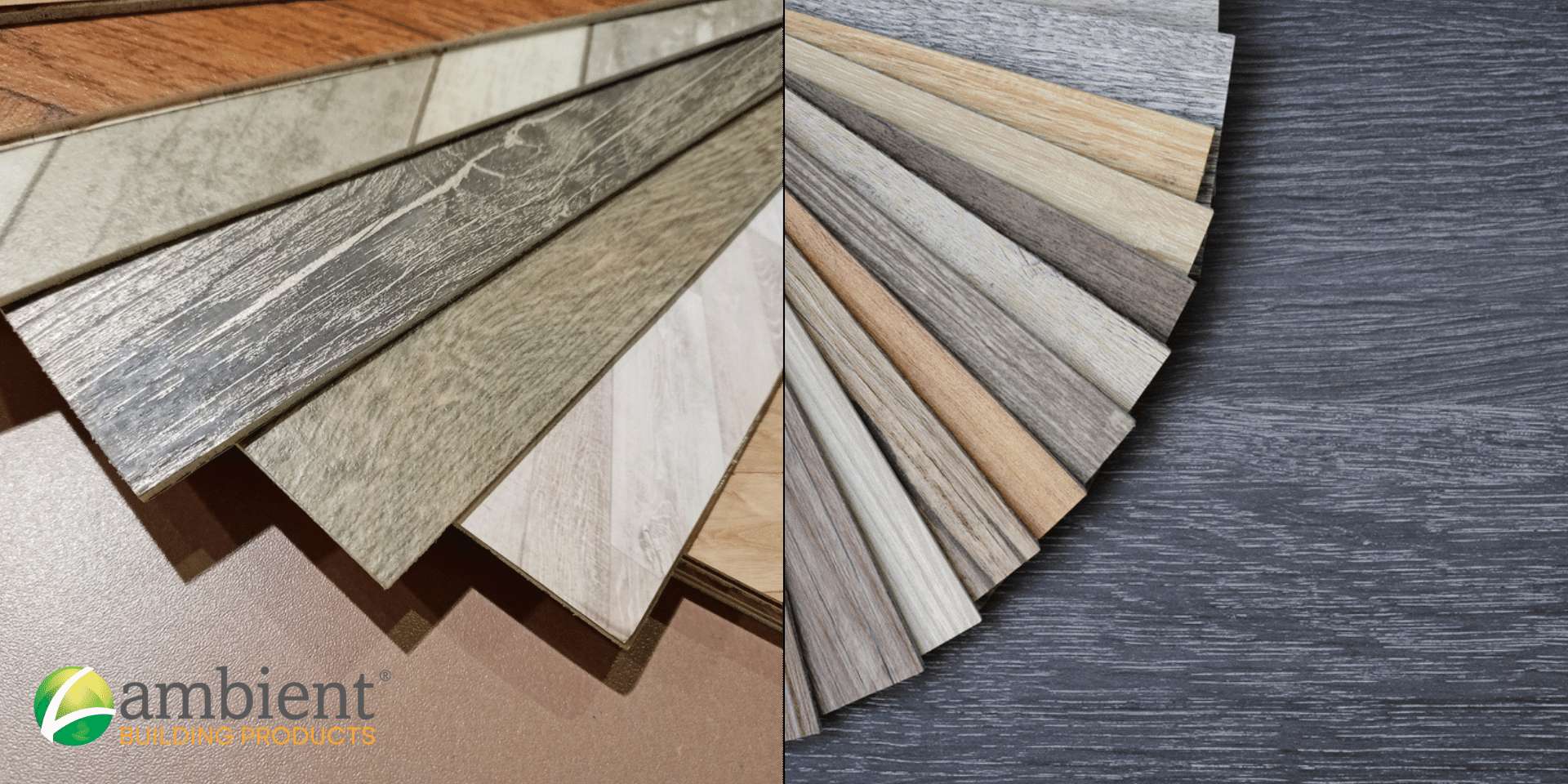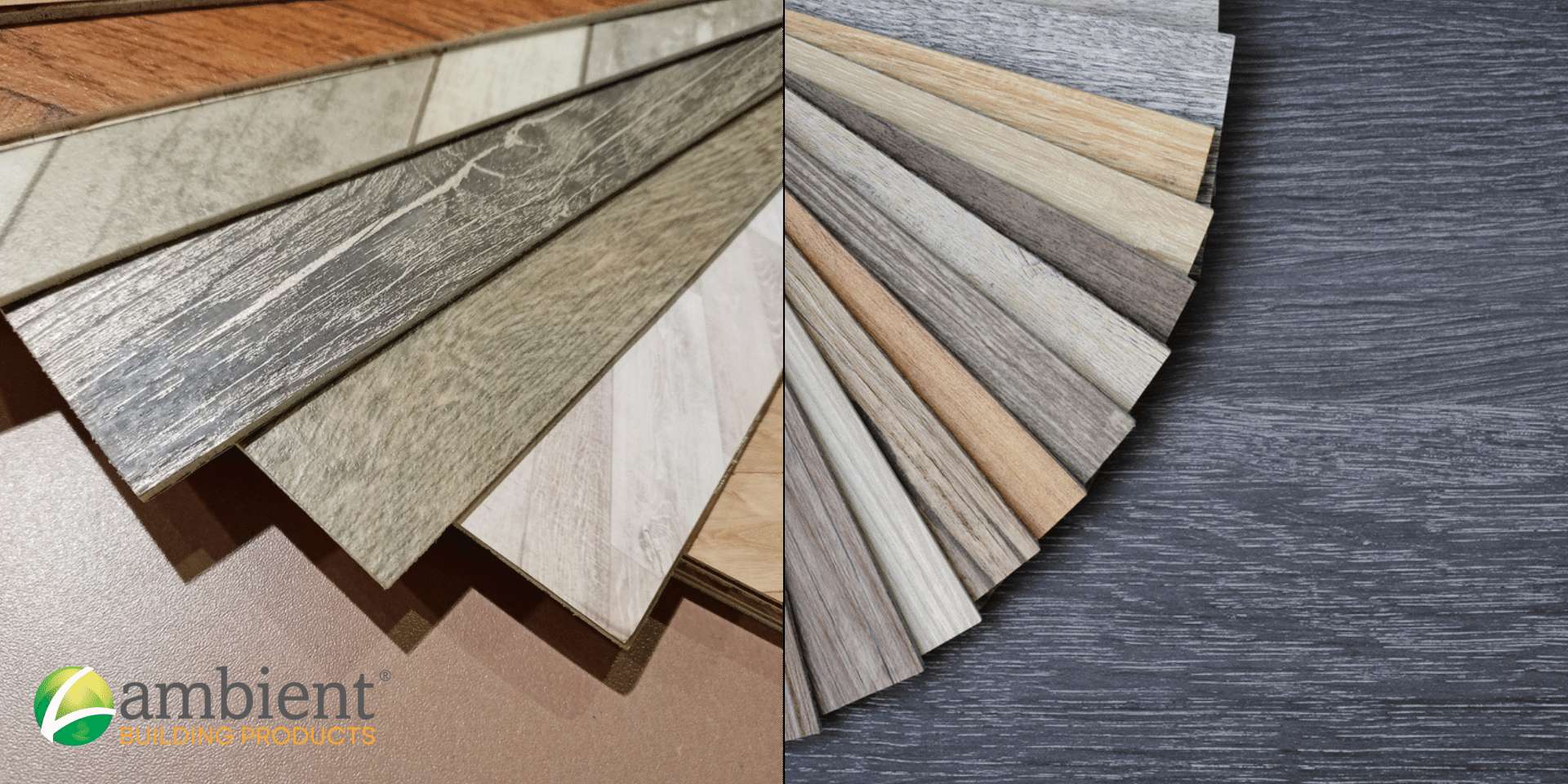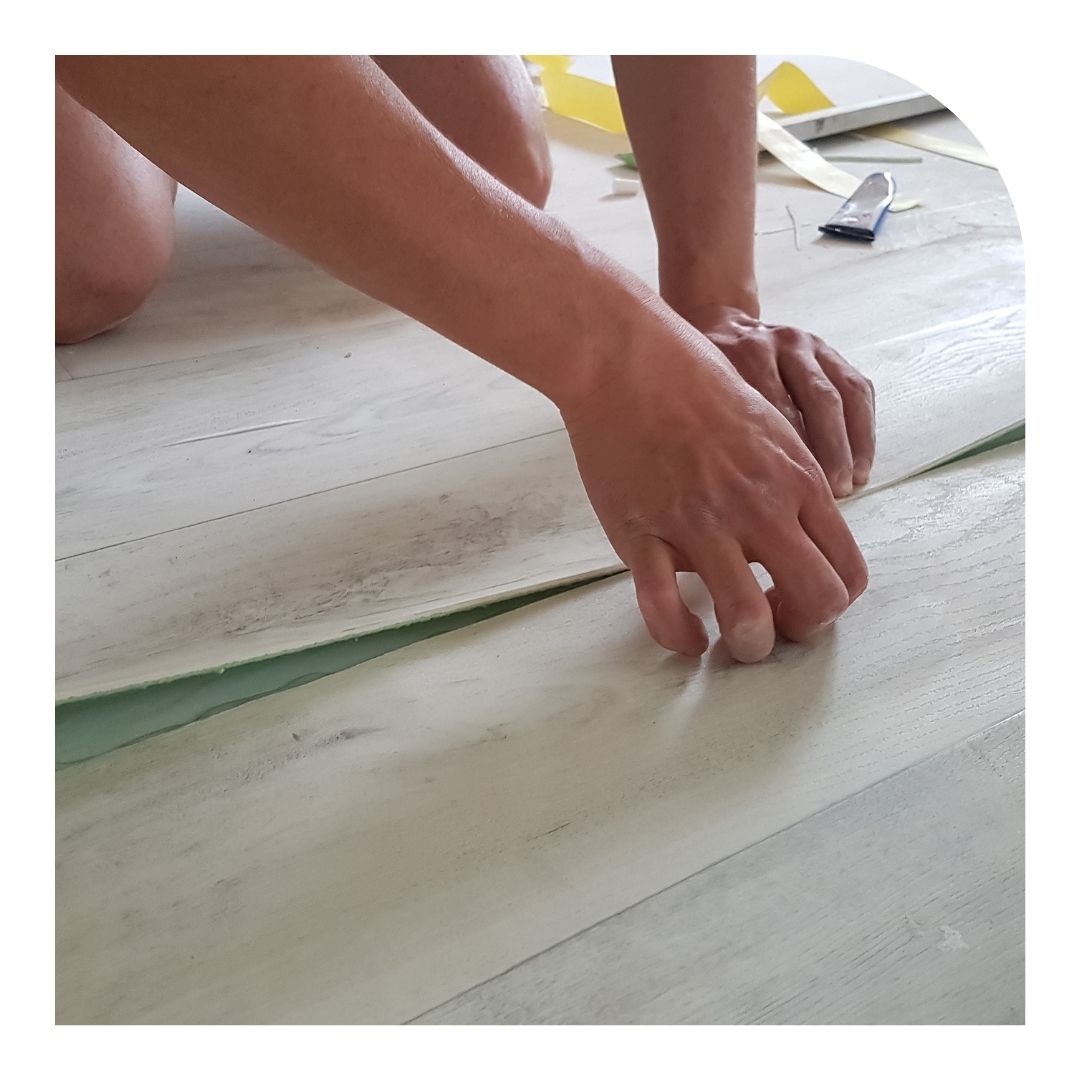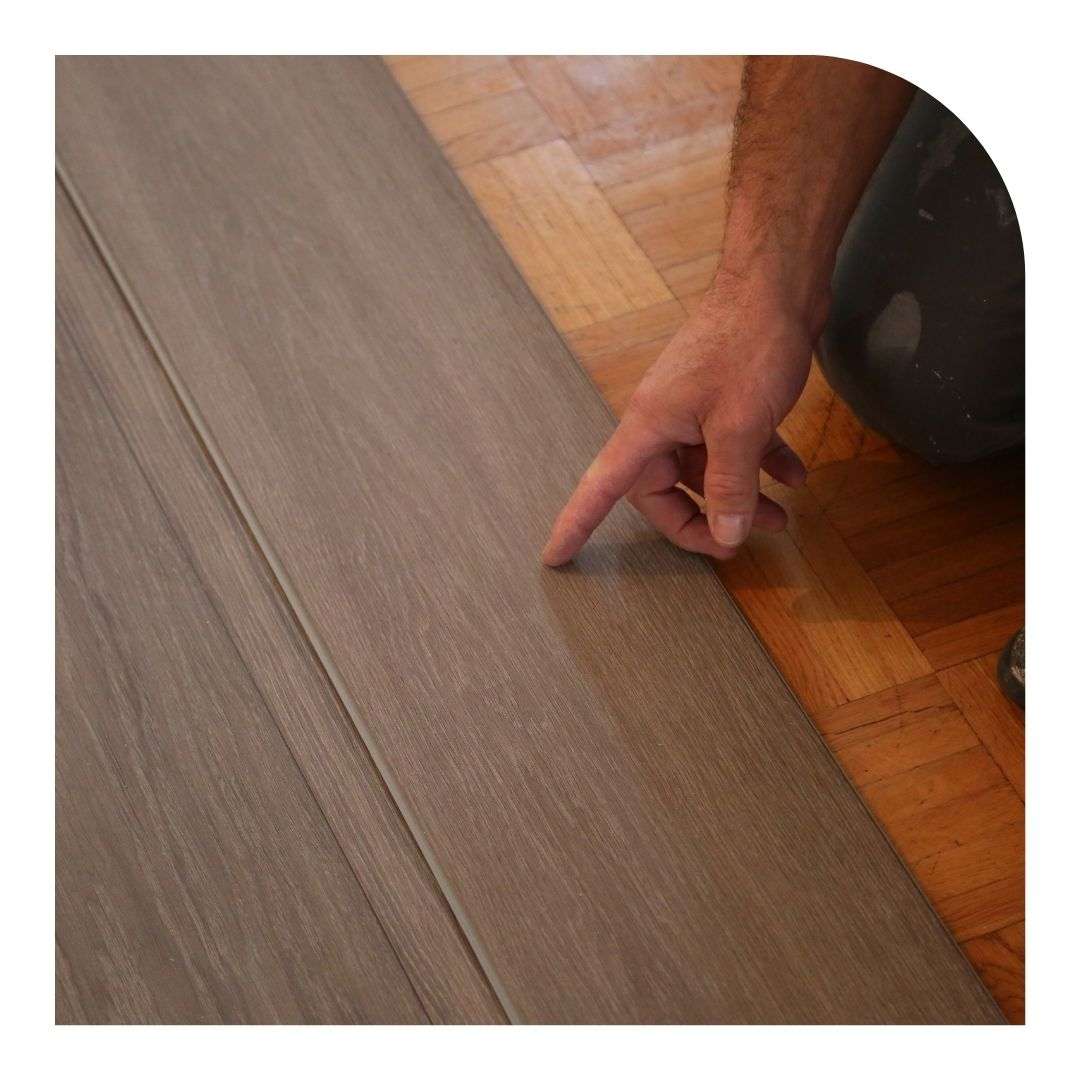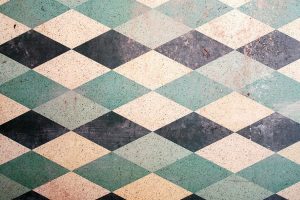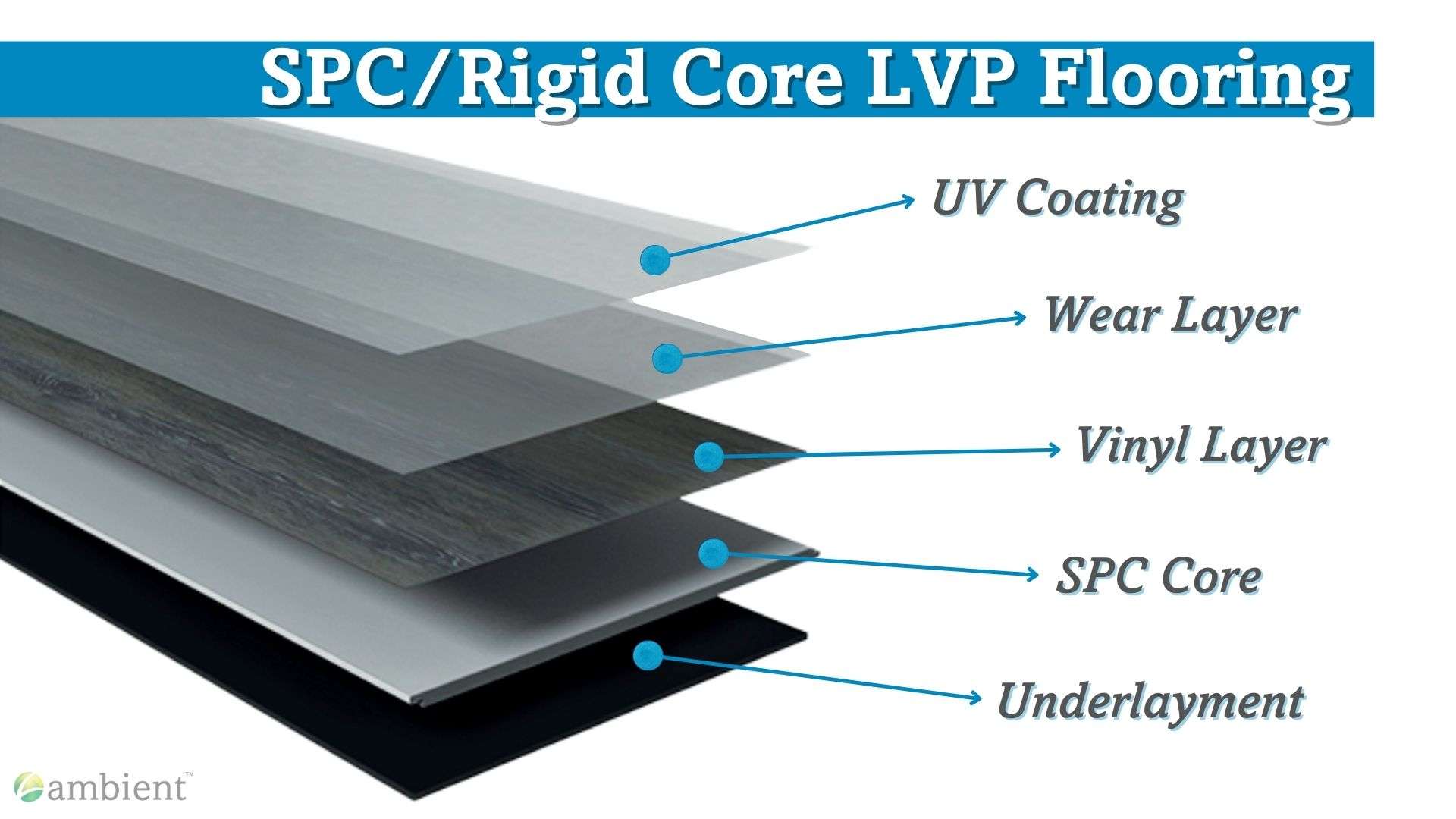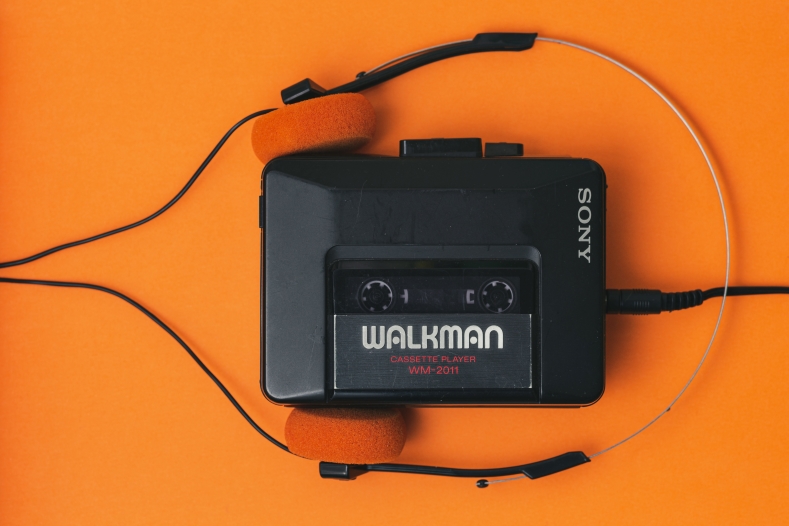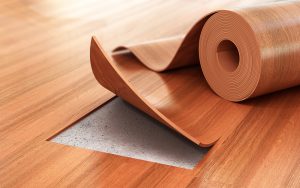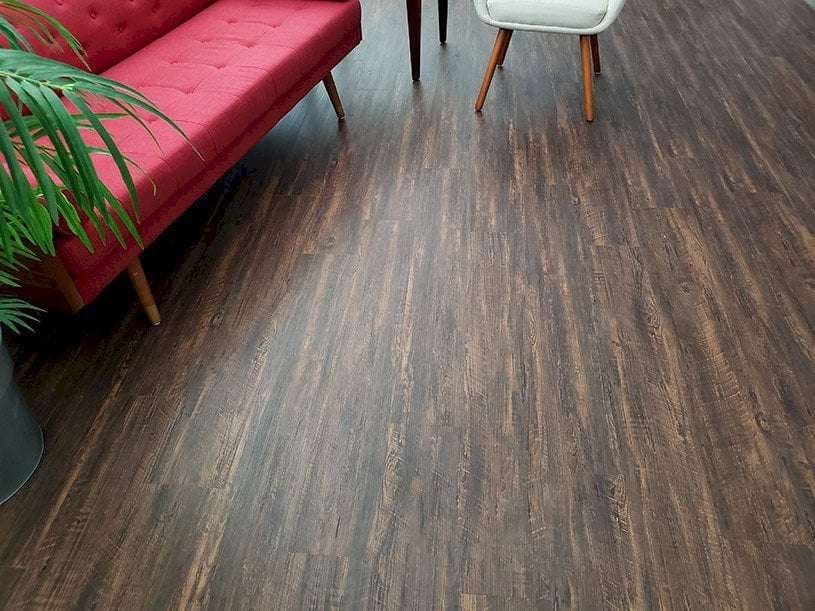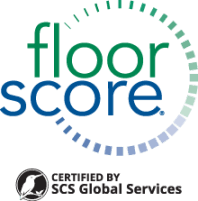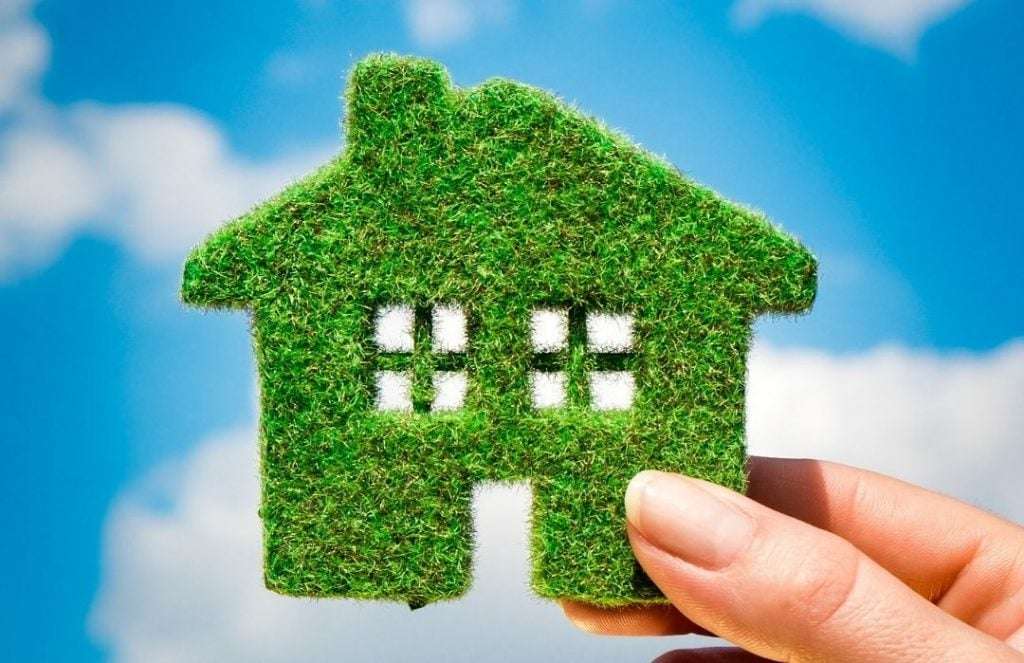You’ve likely come across linoleum and vinyl during your search for affordable flooring options. It can be a challenge to decide between them given all their similarities and how much they have to offer.
Don’t worry – we’re here to help! This article will address the key differences between linoleum and vinyl so you are well-equipped to make the best choice.
What are Linoleum and Vinyl?
So are linoleum and vinyl the same thing? Absolutely not. Let’s begin by exploring the composition of each of these materials. Then, in the next section, we’ll compare them to each other in the areas of appearance, applications, durability, sustainability, and more.
This might surprise you, but linoleum is an entirely natural compound. In other words, it’s made from all-natural materials like linseed oil, wood fillers, and resins. Although it can contain a slightly modified mix of substances (including powdered wood and limestone), it remains organic.
Despite how natural it is, linoleum can be tough and rigid like plastic. It looks like a cross between rubber and tile.
Vinyl, by comparison, is a largely inorganic material. Its primary ingredient is polyvinyl chloride (PVC) – a synthetic compound. Its manufacturing process is known to consume high volumes of petroleum.
Additionally, it gains durability from a polyurethane finish, which also contributes to its overall synthetic nature. In general, it is not an incredibly eco-friendly or energy-efficient product.
Sustainability aside (more on that later) there are intrinsic benefits to vinyl over linoleum – and vice versa!
Linoleum Flooring vs Vinyl Flooring
Perhaps you’re reading this article because you Googled ‘which is better vinyl or linoleum’ … if so, you’re in the right place! It’s time to compare these two popular flooring materials.
#1: Appearance
The conversation comparing the appearances of vinyl and linoleum revolves around two words: embedded or embossed.
The patterns exhibited by linoleum floors are embedded – meaning they permeate the entire substance. This is good because the floor doesn’t usually fade, and its color can’t be easily chipped away.
Linoleum floors are primarily sold in solid colors. However, they can also feature various designs: plaid, geometric, or mosaic patterns, to name a few.
Linoleum is derived from linseed oil, wood fillers, and resins due to its organic nature. As a result, manufacturers typically stick to the natural pigments that coincide with these compositional elements. Thus, its colors tend to be more muted.
In comparison, vinyl offers an essentially infinite variety of colors and styles. This is due to the embossed nature of its appearance. Embossed floors are those whose patterns are printed on them rather than manufactured into them. Vinyl floors are comprised of various layers, color being one of them!
Printed patterns arguably give vinyl an aesthetic edge over linoleum.
One of the most popular styles is wood-look vinyl. The embossed pattern allows the floor to exhibit stylistic finishes beyond the color. And wood-look is only the beginning: vinyl is capable of mimicking virtually any type of floor on the market.
It can also be printed with images.
We’ve all seen shirts, socks, and everything else under the sun printed with pets’ faces. While we don’t necessarily recommend printing your pup’s face on your floor, it’s entirely possible!
#2: Durability
Vinyl might offer a lot of different looks, but its durability is frequently criticized. Because its patterns are embossed, they can be chipped, scuffed, and worn.
While refinishing is often encouraged by vinyl manufacturers, aggressive or excessive sanding can eliminate the embossed imaging.
Having said that, when vinyl floors are coated with polyurethane, they become much more durable. In this case, scratches can usually be buffed out and re-coated without ever reaching the imaged layer of the floors.
As a result of this coating, nowadays vinyl floors are commonly used in high-traffic and damp environments. Which begs the question: is linoleum as waterproof as vinyl? No – vinyl floors are waterproof compared to the water-resistant nature of linoleum.
Recent developments in flooring have also led to rigid-core prototypes like stone polymer composite (SPC) vinyl floors. These floors are less likely to expand or react to excessive moisture due to their rigidity. Thus, they are warranted for installation below grade and are less apt to result in water damage.
In contrast, linoleum floors will curl when exposed to water for too long. As a result, linoleum is not recommended for installation in basements and other below-grade areas.
“Only 90s kids will remember…” Linoleum was once a popular flooring in schools and kitchens. In some places, linoleum floors are still popular for these types of professional installations.
What else do 90s kids remember? Our trusty Walkmans, of course!
Although linoleum doesn’t handle moisture as well as vinyl, it is known to be an extremely durable and resilient flooring material. In fact, if it’s properly maintained, it can last for 40+ years. Plus, it’s resistant to wear and tear (remember, its color doesn’t chip or fade).
It’s hard to say which material is more durable than the other. Vinyl is typically the better choice in a below-grade or damp location. However, linoleum can last for decades with the full preservation of its color/print. Of course, the success of both materials depends on how the floor is installed.
#3: Applications
The three primary applications of linoleum and vinyl are:
- sheets
- planks
- tiles
Linoleum is usually installed in sheets, whereas vinyl typically comes as planks.
Sheet flooring is a singular piece that is installed across an entire room. Linoleum is frequently installed this way because of how inflexible it is (and hard to cut). It might also appear unstable or show imperfections if installed on a subfloor that isn’t level.
This can create a challenge for DIY installers. It is often best to lay linoleum in one run once the room has been prepared properly.
Sheet vinyl isn’t any better – while easier to trim, it is also hard to fit precisely.
Vinyl plank (also known as luxury vinyl plank or LVP), by comparison, is much easier to install. Newer models of vinyl SPC flooring come with convenient click-lock mechanisms that slide right into each other. This makes it a dream come true for homeowners looking to save some money and handle the installation themselves.
Linoleum and vinyl tiles, meanwhile, are universally easy to install. Many of these products come with peel-and-stick adhesives that are quick and easy to use. It is a minimal mess/fuss sort of installation perfect for DIY projects.
While it’s possible to install either linoleum or vinyl, the latter is clearly the winner in terms of ease. Since vinyl is more flexible than linoleum, most people find it easier to put down on their floors.
And if you’re wondering about the cost difference between linoleum and vinyl, again vinyl wins. It often costs less than half per square foot than linoleum.
#4: Sustainability
While we have made a strong case for vinyl on account of its customizable appearance and easy installation, there are drawbacks. To put it another way, vinyl isn’t necessarily very eco-friendly.
It’s made from a synthetic material called PVC (polyvinyl chloride), which is a type of plastic. PVC isn’t friendly to the environment in these ways:
- its polyurethane finish emits VOCs (volatile organic compounds) after being installed
- it’s not biodegradable
- it can’t be recycled
- it’s not sustainable (meaning that it can’t meet our current needs without compromising the needs of future generations)
- it requires a lot of energy consumption when it’s manufactured
While it’s impossible to entirely rid vinyl of VOCs, there are standards in place to ensure its safety. In fact, finding vinyl flooring that passes these indoor air quality tests (e.g. CARB Phase II) is as simple as choosing a reputable flooring manufacturer.
Floors that are safe for your home or business are easy to locate. Look for the Floorscore certification badge on the manufacturer’s website.
Linoleum, on the other hand, is one of the most sustainable and natural flooring options available. As an organic compound, it is recyclable and biodegradable.
In general, linoleum is considered a non-toxic material that doesn’t give off VOCs.
Moreover, this type of flooring can last up to 40 years if maintained properly. In this sense, linoleum is quite sustainable due to its longevity.
So Which is Best: Linoleum vs. Vinyl?
A lot of this boils down to personal preference. While both linoleum and vinyl are affordable, vinyl is cost-effective and great for renovations on a tight budget. It is also easier to install than linoleum, highly durable, and waterproof to boot.
Linoleum, on the other hand, will likely suit you better if organic living is a top priority. You may think it’s out of style, but it has made a resurgence in recent years. Whether you like the simplicity of its design or its sustainable features, linoleum is also a quality consideration for flooring.
Need to know where to start your shopping? Check out Ambient’s sustainable bamboo and luxury vinyl plank flooring and grab some free floor samples today!

About the Author
Meet Bridgett, your friendly neighborhood green building guru! With more years of experience than she’d like to admit, Bridgett is your go-to expert for all things eco-friendly construction. She’s on a mission to make your home the envy of every tree hugger in town (and maybe even the squirrels 🐿️). Let’s build a greener, funnier, and all-around better world together – one enlightened eco-conscious choice at a time!

